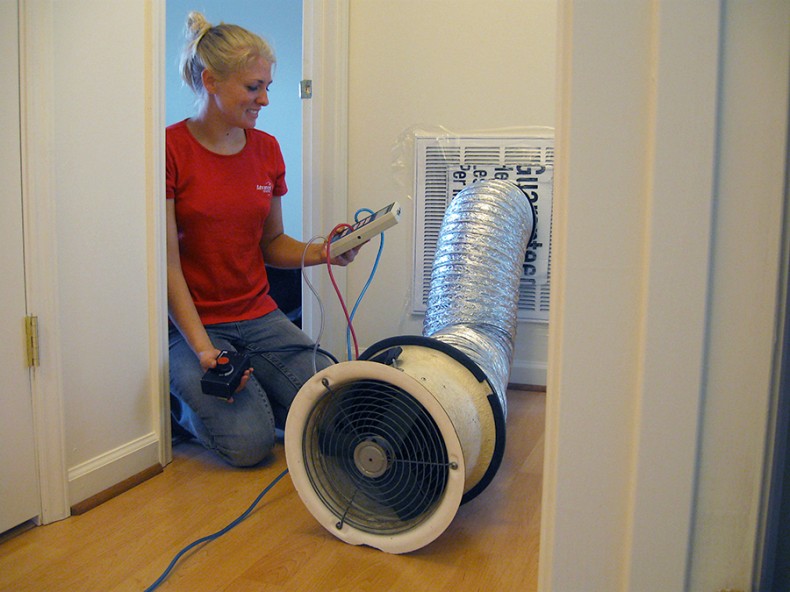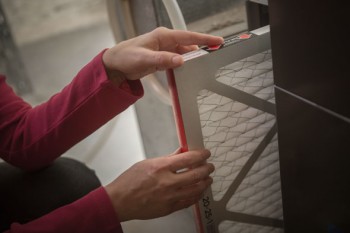Duct sealing: What’s the big deal?
By Hannah McKenzie
A Duct Blaster test by a qualified HVAC professional can reveal where ducts leak.
Q: A friend recommended that I have my home’s HVAC ducts sealed to improve energy efficiency and indoor air quality. I don’t see any holes in the ducts. Wouldn’t it be better to have the ducts cleaned?
A: It is confusing to have duct sealing recommended when you don’t see obvious holes in your HVAC ducts. Duct leakage is not only a major factor in energy bills and indoor air quality (IAQ), but also impacts the comfort and durability of your home.
I have inspected hundreds of North Carolina homes that reportedly had properly sealed ducts but an air tightness test revealed otherwise. Professional HVAC companies, home energy raters like myself and now building code officials rely on testing to make sure ducts are properly sealed.
When looking for leaks in duct systems, we’re not only looking for holes we can stick our fingers through, but also small gaps, pin holes and unsealed joints that can add up to a big problem. Research estimates that many North Carolina homes built prior to 2012 manifest up to 25 percent of heated and cooled air being lost through duct leaks. Considering that heating and cooling our homes is often the largest energy expense, sealing ducts may be a sensible energy saving home improvement. Since 2012, the North Carolina building code requires all forced air HVAC systems in new homes to pass tests proving the system is losing no more than 6 percent of the heated and cooled air.
Improved IAQ is often another benefit of properly sealed ducts. Like a rip current dangerously pulling a person away from the ocean shore, tiny holes and gaps in an HVAC system may suck dust and unsavory air into the HVAC system and ultimately circulate it in your home.
When looking for duct leaks, start indoors by removing the grill from the air supply and return vents. Is there caulk or foam sealing the gap between the metal boot and the ceiling, floor or wall? Even a gap as thin as a 1/16 inch can add up to a big area if you consider the same gap around the other 10 to 20 supply vents in your home. Dirty or rusted air supply grills can also be a red flag that the HVAC system is blowing attic or crawlspace air into your home.
Next go peek at the HVAC ducts and air handler. All ducts should be securely connected to one another, the HVAC unit and the floor or ceiling. Look below the duct insulation to confirm that the duct joints are covered in a dry paste called mastic. Research has shown that tape alone is often an inadequate joint sealant. An HVAC professional will be able to seal all parts of the HVAC system and test it to ensure it meets the agreed upon duct tightness.
Contact your electric cooperative to ask about recommended HVAC professionals and guidance for duct sealing. When selecting an HVAC company, solicit estimates from at least three companies and be sure they include air tightness testing as part of their package. Contact at least three references from each company to make sure the HVAC professionals were respectful, timely and did quality work.
Duct cleaning can be tempting since advertisements and coupons claim duct cleaning services to be a “quick fix” for poor IAQ. We’ll explore the ins and outs of duct cleaning next month. A good first step for improving a home’s IAQ and energy efficiency is reducing duct leakage. The payback is well worth it.
-
Share this story:




